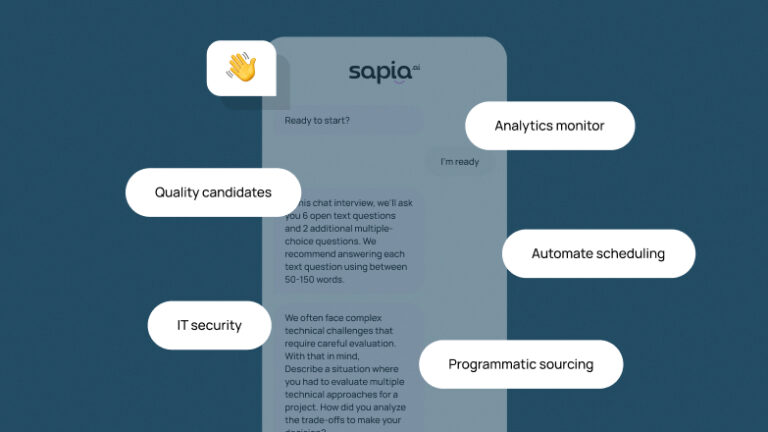Why Emotional Intelligence (EQ) needs a rethink, and fast


Here’s a hot take: The science of Emotional Intelligence (EQ) is dubious, confusing, and anything but settled. When it comes to talent identification, that can be a problem.
First, what is Emotional Intelligence (EQ)?
We tend to measure EQ in the same way we do IQ: Using a test with a series of questions. But emotion and cognitive ability are totally different, and as sciencealert.com points out, ‘It’s much more difficult to measure EI scores as often emotion-based questions do not have one correct answer.’ Add to this the fact that many EQ tests rely on self-reported data, and you can see how IQ and EQ are not simply two equal sides of the coin that make up a person.
That’s not to say that Emotional Intelligence doesn’t exist, just that it’s a roundabout way of measuring personality traits and behaviours that other mechanisms, such as the HEXACO personality inventory, do more reliably and effectively. EQ also carries the issue of ranking certain traits as more desirable or ‘better’ than others – for example, extraversion, agreeableness, and openness.
The trap of over-weighting agreeableness
When we say someone has good or high EQ, what we tend to mean is that they’re friendly, kind, self-aware, and generally speaking, extraverted. They can adjust their tone and approach depending on who they’re talking to. They’re not known to be rude, or brash, or talk too much.
That’s an estimation of someone with good EQ, and this is the problem: It’s an empirical judgment. And while we think we’re describing someone who is emotionally intelligent, we’re really describing someone who is high in agreeableness, emotionality, openness, and other more valid measures of personality. Sounds like a great person, sure, but not necessarily a better type of person for every situation.
Consider this: Many studies have shown that disagreeable people tend to perform better over their career than people who are polite, kind, and friendly. A great proportion of CEOs, be they women or men, are high in disagreeableness. It’s easy to see why: though there are many downsides to disagreeableness, it pays, in many situations, to possess the ability to be combative, straightforward, and brutally honest. To think of disagreeableness as inherently worse than agreeableness is misguided and, at worst, discriminatory.
And even if that is not true, and all of the varied and ever-changing definitions of Emotional Intelligence lead to better job performance, how do we even measure it accurately?
How do you accurately measure Emotional Intelligence (EQ)?
In the context of hiring, EQ is often used as a gut-feel heuristic we apply to people with whom we gel. Even in structured face-to-face interviews, it can be very difficult to assign as score to the different measures of EQ.
Imagine someone is sitting across from you in an interview. By sight, they appear to be an average person in every way. So, by your questions and their responses, how do you measure their:
- Self-awareness. What are the repeatable, verifiable signals of someone who is aware of themselves? Is it their propensity to correct statements mid-sentence? Is it the way they ask you where to sit before committing to a position? Is it the way they maintain eye-contact? How much or little eye-contact do you need to be satisfied of above-average self-awareness?
- Adaptability, teamwork, or ability to influence. Sure, you might ask them about a time where they had to apply abstract thinking to resolve a stressful situation, but how do you rate their answer objectively? Experience may tell you that they have been adaptable, and that’s all well and good, but how do you rank that against someone who is, personality-wise, highly geared for adaptability, but has not had the opportunity to prove it? In other words, how do you assess potential fairly, from candidate to candidate?
The alternative to measuring EQ badly
Again, aside from face-value judgments of agreeableness and social tact, it’s near-on impossible to assess EQ in any fair or meaningful way. That’s not even accounting for the many biases we, as humans, bring to the hiring process. You might, with some accuracy, be able to appraise a person’s EQ once it’s been proven, but that’s not useful at all in recruitment. In hiring, you’re hedging against unknowns, hoping for the best.
That’s what makes accurate personality assessment so critical – and why we built our Ai Smart Interviewer. It finds you the people you need based on an accurate, HEXACO-based assessment of their personality. One interview, via chat, is all it takes.
We look at the critical power skills – communication, emotionality, empathy, openness, and so on – and profile all candidates fairly against one another. So you’re ranking suitability on objective and repeatable measures. No guesswork involved. No bias.
You bet it works. 94% of the 2+ million candidates we’ve interviewed found their personality insights accurate and valuable. On average, 80% of the candidates who experience our interview process recommend you as an employer of choice, even if they don’t get the job.
Someone with an ostensibly high EQ is, in most cases, someone you might want. But appearances can be deceiving, and humans, by nature, are not good at objectively assessing personality. We’re just not, period.
Get the help you need, and you’ll quickly hire the people you want.


